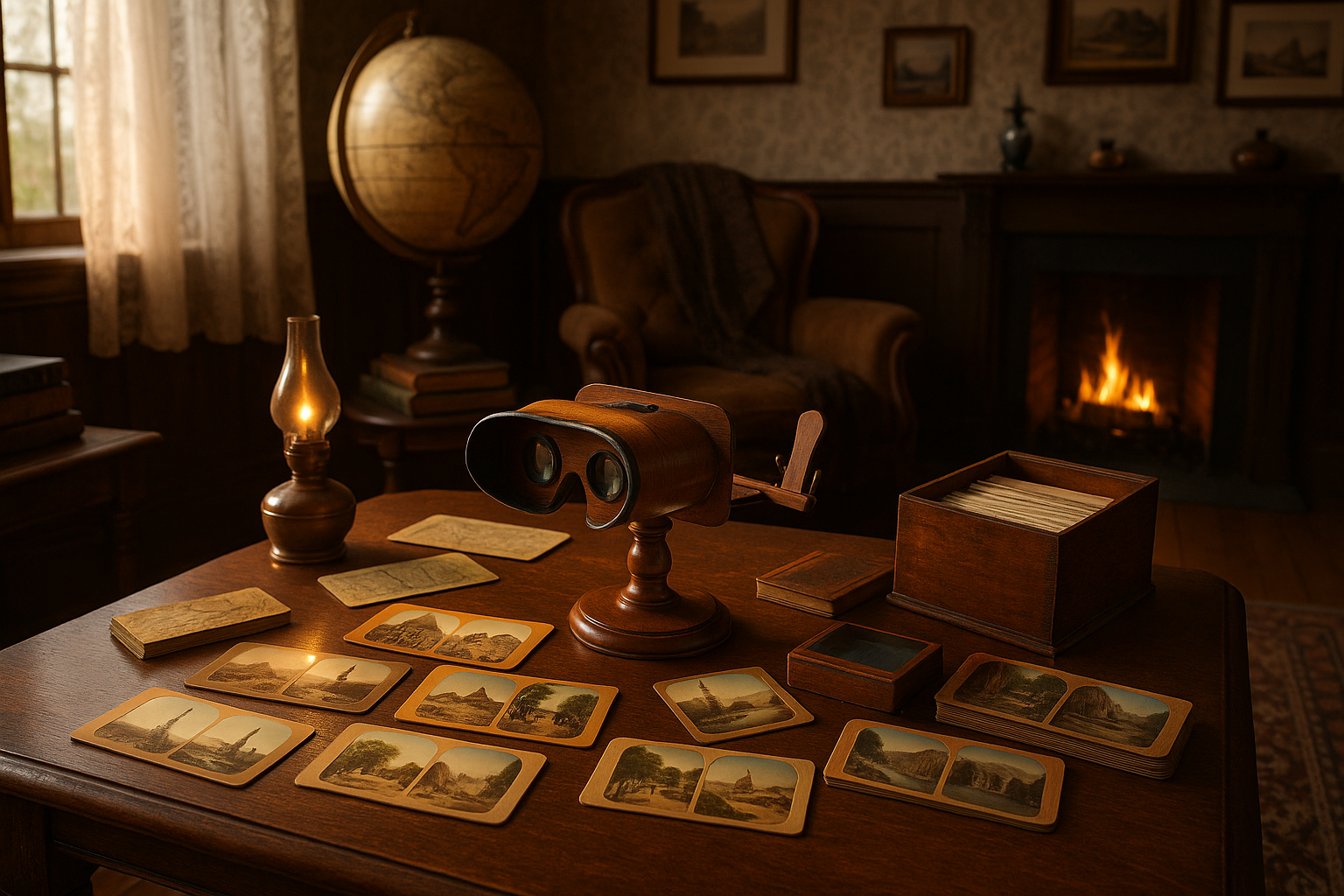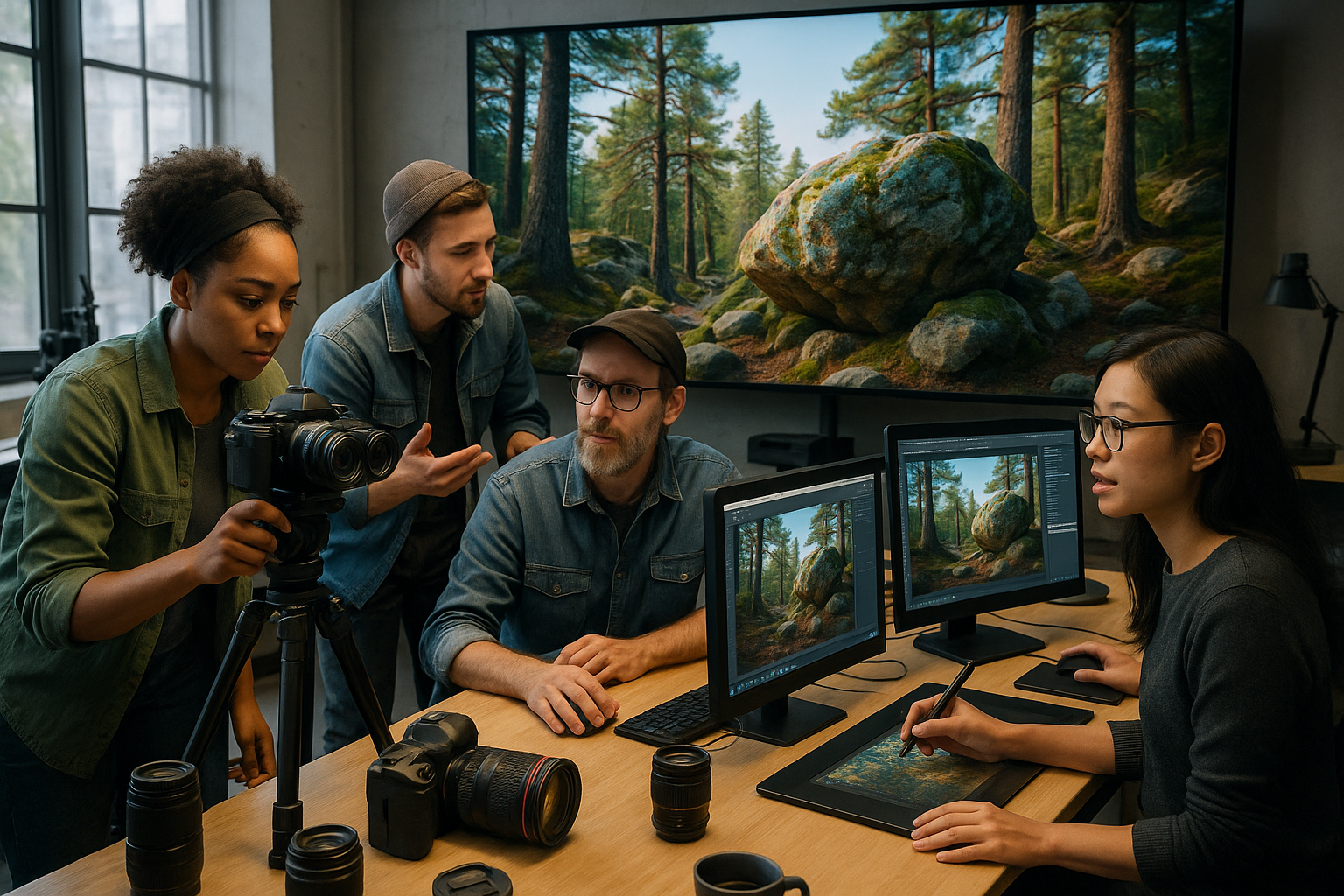In the world of creation and innovation, few processes hold the mystique and transformative power of metal casting. Imagine taking a raw idea—a fleeting spark of creativity—and seeing it manifest into a tangible object that not only stands the test of time but also bears the mark of artistry and precision. Metal casting, the ancient yet continually evolving craft of pouring molten metal into molds to produce complex shapes and designs, is a testament to human ingenuity and the relentless pursuit of turning imagination into reality. Whether you’re a seasoned artisan or a curious novice, understanding the intricacies of this craft offers a fascinating glimpse into the art and science that underpin our material world. 🛠
Metal casting is more than just a method of fabrication; it is a journey that spans centuries, cultures, and technologies. Its roots can be traced back to ancient civilizations, where early humans discovered the mesmerizing process of melting metal and pouring it into rudimentary molds made of stone or clay. These early castings paved the way for advancements in tool-making, sculpture, and even coinage, each casting bearing a story of its own. Fast forward to the present day, and you’ll find that while the core principles of metal casting remain unchanged, the techniques and materials have evolved dramatically. From the humble beginnings of sand casting to the precision of investment casting, each method brings with it a unique set of possibilities and challenges. 🌍
As we delve deeper into this captivating world, we’ll explore the diverse methods of metal casting, each offering its own unique flair and suitability for different applications. We’ll journey through the rugged landscapes of sand casting, where grains of sand meticulously shaped create the perfect mold for larger, more industrial pieces. We’ll navigate the intricate pathways of investment casting, also known as lost-wax casting, where precision and detail reign supreme, allowing for the creation of intricate components used in everything from jewelry to aerospace engineering. And we won’t stop there. We’ll also touch on die casting, a method that marries speed with precision, favored in the production of complex and high-volume metal parts.
The craft of mold-making, equally as vital, demands our attention. Molds are the unsung heroes of metal casting, the silent architects that dictate the form and function of the final product. Crafting a mold requires a keen eye and a deep understanding of the material properties, as the mold must withstand the intense heat and pressure of molten metal. This process involves a blend of artistry and engineering, where creativity meets exactitude. We’ll examine the materials used in mold-making, from the traditional clays and sands to modern, high-tech composites, and how each influences the outcome of the casting process.
Finally, we will look to the future of metal casting, a future that promises exciting innovations driven by technology and sustainability. As 3D printing and computer-aided design continue to revolutionize manufacturing, metal casting is not being left behind. These technologies are enabling more intricate and efficient mold designs, reducing waste, and opening new horizons in terms of what can be created. We’ll discuss how the integration of these technologies is shaping the next generation of metal casters and how sustainable practices are being woven into the fabric of the industry, ensuring that this ancient craft not only survives but thrives in the modern era.
Join us as we embark on this exploration of metal casting and molds—a journey that promises to enlighten, inspire, and perhaps ignite your own creative endeavors. Whether you’re looking to expand your knowledge or simply appreciate the artistry involved, this exploration offers a wealth of insights into the timeless dance between fire, metal, and human creativity. Let’s mold those ideas into reality, together. 🔥
Certainly! Here’s a well-structured article body with a focus on metal casting and molds. The content includes subheadings, tables, a link to a YouTube video, and a call to action:
The Fundamentals of Metal Casting
Metal casting is an ancient and intricate process, dating back thousands of years, where molten metal is poured into a mold to create a desired shape. This age-old technique has evolved significantly over time, adapting to modern technologies while retaining its core principles. The metal casting process is pivotal in manufacturing a wide array of components ranging from simple tools to complex machinery parts. Understanding the fundamentals of metal casting involves grasping key concepts such as mold creation, metal selection, and the casting process itself.
At its core, metal casting begins with the creation of a mold, which serves as a negative of the desired shape. The mold material varies based on the type of casting and the metal being used. Commonly, molds are made from sand, metal, or ceramic. Sand casting, for example, employs a sand-based mold, which is cost-effective and ideal for large-scale production. The choice of mold material greatly impacts the final product’s surface finish, dimensional accuracy, and production cost.
The selection of metal is another critical factor in the casting process. Metals such as aluminum, iron, and steel are frequently used due to their desirable properties. Each metal offers distinct advantages; aluminum is lightweight and corrosion-resistant, making it suitable for automotive and aerospace applications, whereas iron is known for its strength and wear resistance, ideal for heavy machinery. Deciding on the appropriate metal requires an understanding of the end-use requirements, including mechanical properties, thermal characteristics, and budget constraints.
The Metal Casting Process
The casting process can be broken down into several key stages, starting with mold preparation, followed by melting and pouring of the metal, and concluding with the cooling and finishing of the cast piece. Mold preparation involves the design and fabrication of the mold, ensuring it can withstand the high temperatures of molten metal without deforming. This stage is crucial for achieving dimensional accuracy and a smooth surface finish.
Once the mold is ready, the metal is melted in a furnace until it reaches the desired temperature. This stage requires precise control to ensure the metal achieves the correct fluidity for pouring. Pouring the molten metal into the mold must be done carefully to prevent defects such as air pockets and inclusions. The metal is then allowed to cool and solidify, taking the shape of the mold.
After solidification, the mold is removed to reveal the cast piece. This stage may involve breaking the mold, particularly in sand casting, or separating reusable molds in permanent mold casting. The final piece often requires finishing processes such as machining, grinding, or heat treatment to enhance its properties and appearance. Attention to detail during each stage of the process is essential to produce high-quality castings.
| Metal Type | Properties | Common Uses |
|---|---|---|
| Aluminum | Lightweight, corrosion-resistant | Automotive, aerospace |
| Iron | Strong, wear-resistant | Heavy machinery |
| Steel | Durable, versatile | Construction, tools |
Types of Molds in Metal Casting
The choice of mold is a critical component in the casting process, influencing the quality, cost, and efficiency of the operation. There are various types of molds used in metal casting, each with its specific applications and benefits. Understanding these differences can help manufacturers select the best mold type for their specific needs, ensuring optimal production outcomes.
One of the most traditional and widely used mold types is the sand mold. Sand molds are made by compacting sand around a pattern to form the mold cavity. The flexibility and low cost of sand make it ideal for large and complex shapes. However, sand molds are typically single-use, requiring new molds for each casting, which can be a disadvantage in mass production. Despite this, the adaptability of sand molds makes them indispensable in industries where custom shapes and sizes are needed.
Permanent molds, on the other hand, are constructed from metal and are used for producing multiple identical castings. These molds are highly durable and offer superior surface finishes compared to sand molds. Permanent mold casting is often used for high-volume production runs of non-ferrous metals like aluminum and magnesium. The initial cost of creating permanent molds can be high, but the ability to reuse them reduces costs over time, making them a cost-effective choice for large-scale manufacturing.
Advanced Mold Technologies
With technological advancements, new mold technologies have emerged to address the limitations of traditional methods. Investment casting, also known as lost wax casting, involves creating a wax model of the desired part, which is then coated with a ceramic shell. Once the shell hardens, the wax is melted away, leaving a hollow mold for metal pouring. This technique allows for exceptional detail and precision, making it ideal for intricate designs in industries such as aerospace and jewelry.
Another innovative method is 3D printed molds, which leverage additive manufacturing technology to produce molds with complex geometries that would be challenging with conventional techniques. 3D printed molds offer rapid prototyping capabilities and can significantly reduce lead times in product development cycles. As 3D printing technology advances, its application in metal casting is expected to expand, offering even greater flexibility and customization.
Choosing the right mold type is crucial for the success of the casting process. It requires careful consideration of factors such as the material being cast, the production volume, and the desired quality of the final product. Manufacturers must weigh these factors against cost considerations to achieve the best balance for their specific applications.
The Role of Technology in Modern Metal Casting
Technology has transformed the landscape of metal casting, introducing innovations that enhance precision, efficiency, and sustainability. Modern casting techniques benefit from advancements in computer-aided design (CAD), simulation software, and automation, all of which contribute to improved production outcomes and reduced environmental impact.
CAD software plays a pivotal role in designing complex molds and cast components. It allows engineers to create detailed 3D models that can be easily modified and optimized for performance. This precision in design translates to more accurate and consistent castings, reducing the need for costly post-casting modifications. CAD also facilitates better communication and collaboration among team members, streamlining the entire design-to-production process.
Simulation software is another technological advancement that has significantly impacted metal casting. By simulating the casting process, engineers can predict potential defects and optimize parameters before actual production begins. This proactive approach minimizes waste and improves the quality of the final product. Simulation tools also enable the exploration of different materials and processes, fostering innovation and experimentation.
Automation and Sustainability
Automation has become a cornerstone of modern metal casting, enhancing efficiency and consistency. Automated casting systems reduce human error and allow for continuous production, increasing throughput and reducing cycle times. Robotic systems can handle tasks such as mold preparation, pouring, and finishing, freeing up human operators for more complex decision-making roles.
Sustainability is another critical focus area in the metal casting industry. Innovations in mold materials and casting processes aim to reduce waste and energy consumption. For example, closed-loop systems recycle sand used in sand casting, minimizing environmental impact. Additionally, advances in furnace technology have improved energy efficiency, reducing the carbon footprint of casting operations.
Embracing these technological advancements is essential for manufacturers seeking to remain competitive in a rapidly evolving industry. By integrating technology into their operations, they can achieve higher quality castings, reduce costs, and contribute to a more sustainable future.
- Watch the video below to see a live demonstration of metal casting: Metal Casting Basics | Tech Insider
Challenges and Future Trends in Metal Casting
While metal casting has seen significant advancements, the industry continues to face challenges that drive innovation and adaptation. One major challenge is the complexity of maintaining quality control across diverse casting processes and materials. Ensuring consistent quality requires stringent testing and inspection protocols, often involving advanced non-destructive testing techniques such as X-ray and ultrasonic testing. These methods allow manufacturers to detect internal defects without damaging the casting, ensuring only high-quality components reach the market.
The industry is also challenged by the need to balance cost and quality. High-quality castings often come at a higher production cost, necessitating a careful analysis of cost drivers and potential savings. Manufacturers are increasingly turning to lean manufacturing principles and continuous improvement strategies to optimize processes and reduce waste. These approaches help in identifying inefficiencies and implementing cost-effective solutions without compromising quality.
In terms of future trends, the integration of digital technologies such as the Internet of Things (IoT) and artificial intelligence (AI) is expected to revolutionize metal casting. IoT-enabled devices can monitor equipment performance in real-time, predicting maintenance needs and preventing downtime. AI algorithms can analyze large datasets to identify patterns and optimize casting parameters for improved quality and efficiency. As these technologies become more accessible, their adoption is likely to increase, driving further advancements in the industry.
Emerging Markets and Global Impact
Globalization has opened new opportunities for metal casting manufacturers, with emerging markets driving demand for cast products. Countries like China and India are experiencing rapid industrialization, leading to increased demand for automotive, construction, and machinery components. This growth presents both opportunities and challenges, as manufacturers must navigate complex supply chains and varying regulatory environments.
Moreover, environmental regulations are becoming stricter worldwide, prompting the industry to adopt greener practices. Sustainable casting techniques, such as using biodegradable binders in sand molds and implementing closed-loop systems, are gaining traction. These practices not only comply with regulations but also appeal to environmentally conscious consumers, providing a competitive edge in the market.
As the metal casting industry evolves, staying informed about these challenges and trends is crucial for businesses seeking to thrive in a competitive landscape. By embracing innovation and sustainability, manufacturers can position themselves for long-term success and contribute to a more sustainable future.
I hope this meets your needs for a comprehensive and engaging article on metal casting and molds!

Conclusion
Crafting a conclusion for the fascinating journey of transforming ideas into reality through the art of metal casting and molds invites us to delve into the core elements explored throughout our discussion. This ancient yet ever-evolving craft captivates with its blend of tradition, innovation, and creativity. Let’s revisit the main points, underscore the significance of this topic, and inspire further engagement and application of the knowledge gained.
Throughout our exploration, we delved into the historical roots of metal casting, a practice that dates back thousands of years and has played a pivotal role in shaping human civilization. From the creation of the first tools and weapons to the intricate sculptures and architectural elements of various cultures, metal casting has left an indelible mark on our history. This historical perspective enriches our understanding of the craft, providing context for its continued relevance and evolution.
We then transitioned to the technical aspects of metal casting, discussing the various materials and methods employed in the process. The selection of appropriate metals and alloys, the intricacies of mold-making, and the precise control of temperatures and cooling rates are all critical factors that determine the quality and durability of the final product. Understanding these technical nuances not only enhances our appreciation for the skill involved but also underscores the meticulous nature of the craft.
Innovation stands at the forefront of metal casting today, with advancements in technology transforming traditional practices. The integration of computer-aided design (CAD) and 3D printing in mold-making has revolutionized the industry, allowing for unprecedented precision and customization. These technological breakthroughs have expanded the possibilities of what can be achieved, paving the way for new applications and creative expressions in art, architecture, and manufacturing.
Moreover, we explored the artistic dimension of metal casting, where imagination meets craftsmanship. Artists and designers harness the power of this medium to bring their visions to life, creating stunning sculptures, jewelry, and functional objects that captivate the senses. The marriage of artistic vision and technical expertise in metal casting exemplifies the harmonious balance between creativity and craftsmanship.
The importance of metal casting extends beyond its artistic and historical significance. It is a cornerstone of modern industry, playing a crucial role in manufacturing, aerospace, automotive, and numerous other sectors. The ability to produce complex, durable, and high-performance components is indispensable in advancing technology and driving economic growth. As such, the art of metal casting remains as relevant today as it was in ancient times, continuing to shape the world around us.
As we conclude this exploration, it is imperative to recognize the significance of nurturing and preserving the skills and knowledge associated with metal casting. This craft represents a rich heritage that deserves to be celebrated and passed on to future generations. By doing so, we ensure the continuity of an art form that is both timeless and adaptive, capable of inspiring new ideas and innovations.
We invite you, dear reader, to reflect on the insights gained from this article and consider the myriad possibilities that metal casting offers. Whether you are an artist, engineer, or enthusiast, there is a place for you in this vibrant community. Share your thoughts and experiences in the comments below, and let us know how metal casting has inspired your creative journey.
Additionally, we encourage you to share this article with others who might be intrigued by the art of metal casting. By spreading awareness and fostering dialogue, we can collectively celebrate and advance this remarkable craft.
For those eager to dive deeper into the world of metal casting, numerous resources and communities are available to support your exploration. Consider visiting the American Foundry Society [link], which offers a wealth of information and networking opportunities for professionals and enthusiasts alike. Additionally, The Crucible [link], an educational nonprofit, provides classes and workshops for those interested in hands-on learning experiences in metal casting and related arts.
In closing, the art of metal casting is a testament to human ingenuity and creativity. It reminds us of our capacity to transform raw materials into objects of beauty and utility, bridging the gap between imagination and reality. Let this knowledge inspire you to mold your ideas into tangible forms, contributing to a tradition that has stood the test of time.
Thank you for joining us on this journey, and may your creative endeavors be as enduring and impactful as the metal castings of history. 🌟
Toni Santos is a visual historian and artisan whose creative lens is captivated by the forgotten marvels of antique optical devices. Through his thoughtful storytelling, Toni revives the instruments that once transformed light into wonder—camera obscuras, magic lanterns, kaleidoscopes, and other ingenious tools that shaped our earliest visual imaginations.
His journey is rooted in a fascination with how humans have long sought to bend, reflect, and reveal the unseen. Whether tracing the mechanical poetry of 19th-century projectors or illustrating the tactile elegance of early lenses, Toni’s work invites us to see vision itself as an evolving art form.
Blending handcrafted design with historical inquiry, Toni brings to life the material soul of these devices—celebrating not just how they functioned, but what they meant. His creations and curated stories illuminate a world where science, illusion, and beauty were intricately linked through glass and brass.
As the curator of Vizovex, Toni shares detailed studies, reconstructed artifacts, and immersive content that help others rediscover the origins of visual technology and the magic of analog perception.
His work is a tribute to:
The craftsmanship behind early visual instruments
The wonder of seeing through the eyes of another century
The intersection of optics, art, and imagination
Whether you’re a collector, a designer, or someone drawn to the lost poetry of vision, Toni welcomes you into a world where light is a storyteller—one prism, one lens, one forgotten invention at a time.





